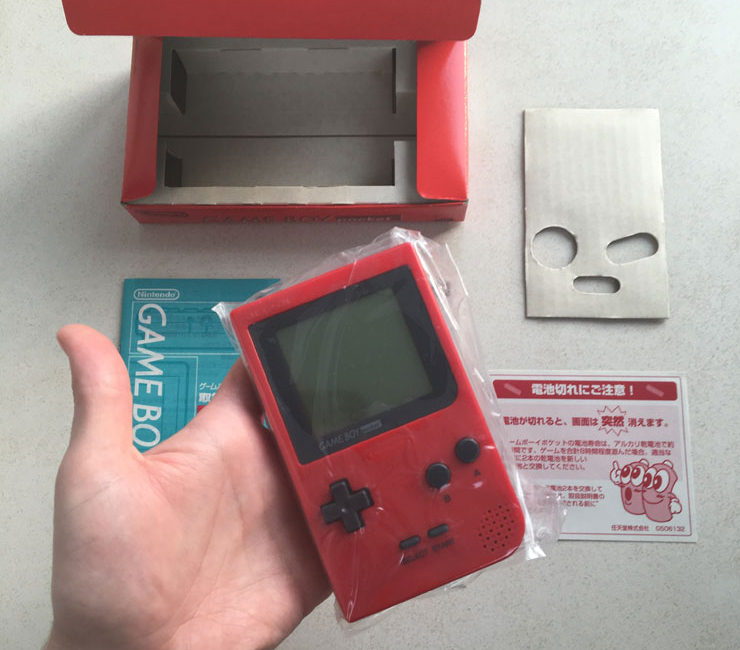
Introduction to the Nintendo GameBoy Pocket
The GameBoy Pocket, released in 1996, is the successor of the classic GameBoy and the predecessor of the GameBoy Light and the GameBoy Color. With compatibility to classic GameBoy titles, a smaller form factor and a black-and-white screen, it was a major improvement to the classic GameBoy. Not only was it more portable by being 30% smaller and flatter, but the screen was larger than that of the classic GameBoy. The first version of the GameBoy Pocket released did not have an LED power indicator like the classic and color GameBoys, however later re-releases of the GameBoy Pocket included this. The GameBoy Pocket plays classic GameBoy Games, however, some GameBoy Color games are known to be compatible with it as well, including Pokémon Gold and Silver, Pokémon Pinball and the Pokémon Trading Card Game.
Specifications
- Product name: GameBoy Pocket
- Model number: MGB-001
- Manufacturer: Nintendo
- Product line: GameBoy line
- Release date: July 21, 1996 (Japan)
- Console Generation: Fourth generation
- Game format: GameBoy cartridges (a few select GameBoy Color catridges)
- Region lock: no
- CPU: 8-bit
- Screen size: 1.91 inches (4.85cm) × 1.71 inches (4.35cm) with a diagonal length of 2.56 inches (6.5cm)
- Screen resolution: 160×144
The Box
The box you see here is the box for the red release of the GameBoy Pocket in Japan. English releases commonly feature a vertical instead of horizontal design and come in either a cardboard or a plastic box. I personally prefer the Japanese design with the box color matching the console color.
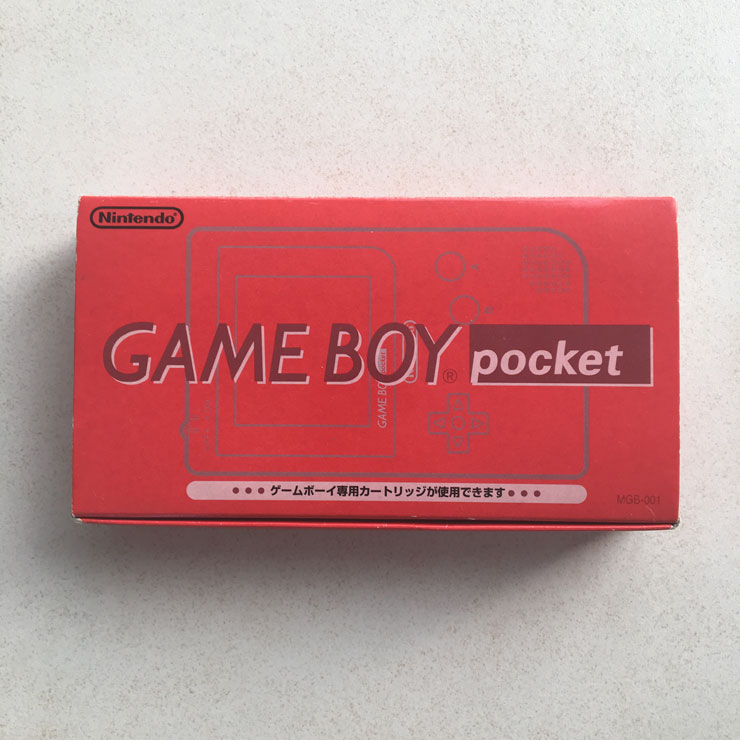
The GameBoy Pocket was released in the following standard colors:
- Silver/chrome
- Red
- Yellow
- Green
- Black
- Transparent
- Pink
Inside the Box
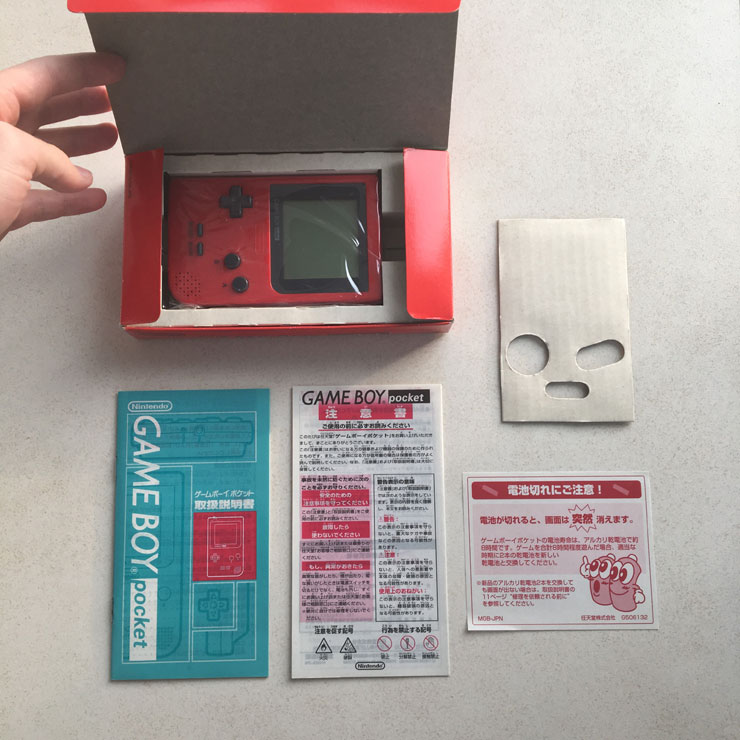
A new standard edition GameBoy Pocket from Japan comes with the following box contents:
- 1x GameBoy Pocket device
- 1x manual
- 1x health and safety leaflet
- 1x battery safety leaflet
The Device
Front
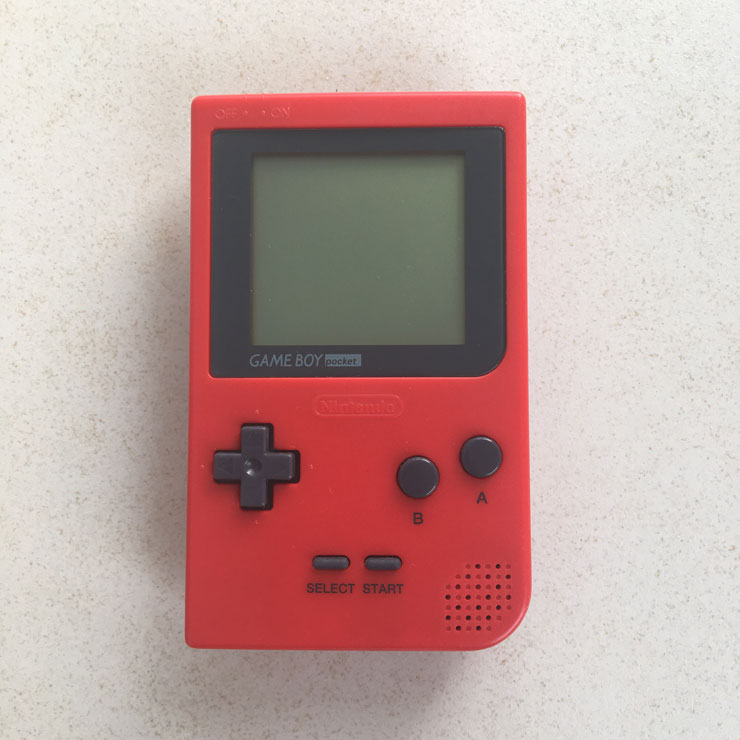
Just like other devices in the GameBoy family, the front of the GameBoy Pocket is where the input buttons, screen and speakers are located. The screen is a black-and-white screen which can display four separate grey tones. The device controls include a D-pad (directional pad) with four directions, an A-button, a B-button, a select button and a start button, same as on the classic GameBoy and GameBoy Color. This is the first version of the GameBoy Pocket which comes without the LED battery power indicator.
Back
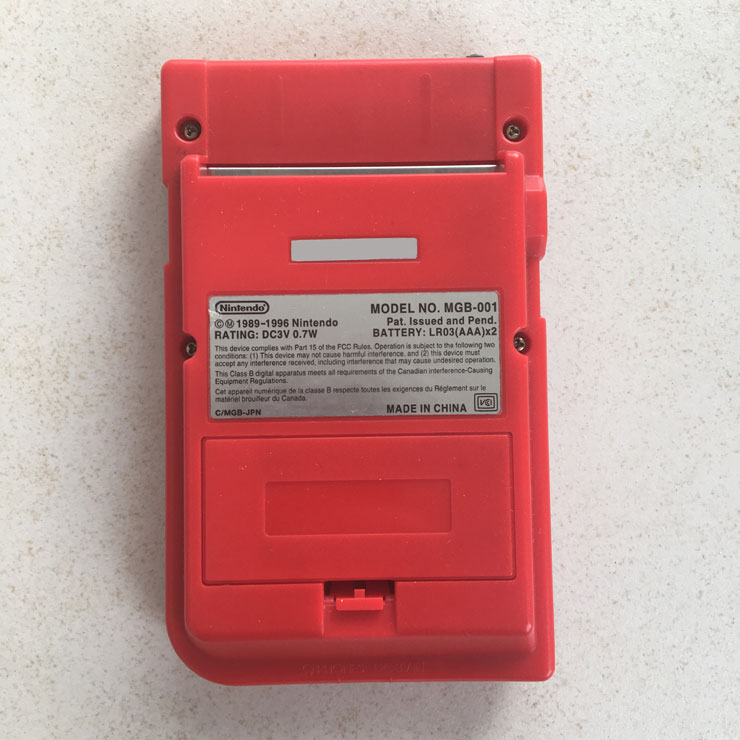
The back of the console is where the device information, the battery compartment and the game cartridge slot are located. The device is powered by two AAA batteries and is quoted to allow up to 10 hours of game time. The device plays classic GameBoy games, as well as the following GameBoy color games (albeit not in color due to the black and white screen):
- Pokémon Gold and Silver
- Pokémon Trading Card Game
- Pokémon Pinball
Right Side
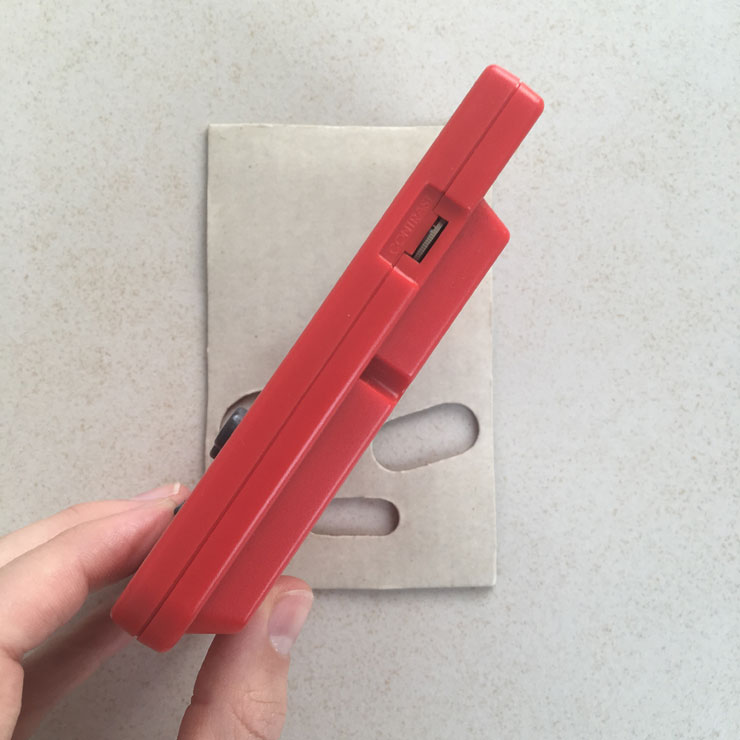
The right side of the device features only a single contrast wheel, which can be used to adjust the screen contrast on the fly to improve visibility in different light settings.
Left Side
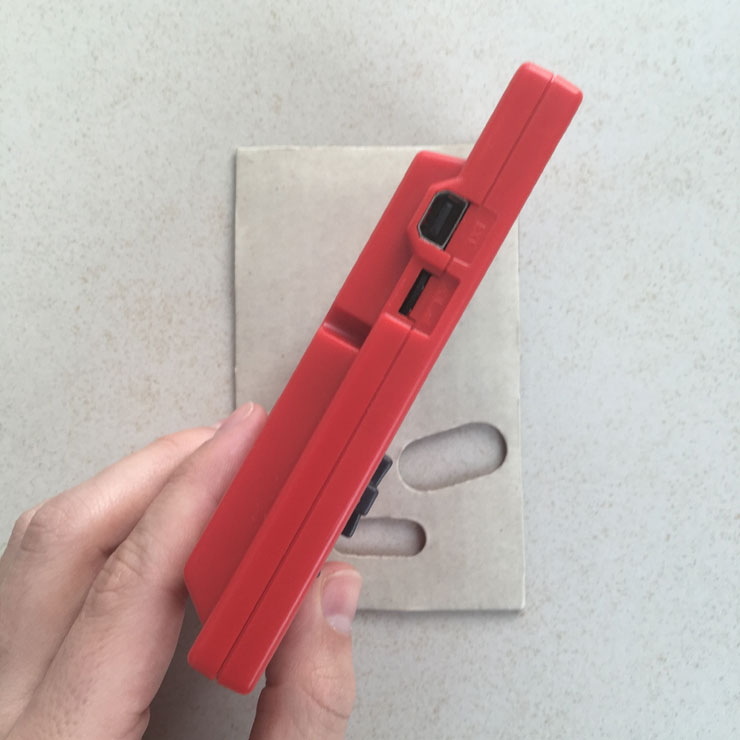
The left side of the device features both the volume wheel and an EXT port to connect external devices. The port is a more compact redesign of the EXT port of the classic GameBoy and was later used for the GameBoy Color and the GameBoy Advance.
Top
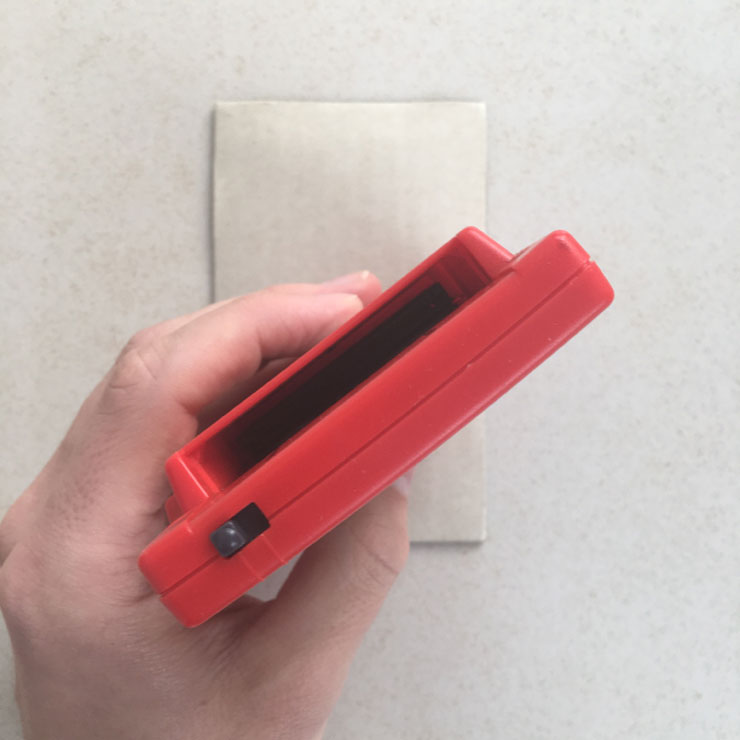
The top of the GameBoy Pocket is where the device’s power switch and game cartridge slots are located. Unlike the GameBoy Color, the GameBoy Pocket does not feature an infra-red port.
Bottom
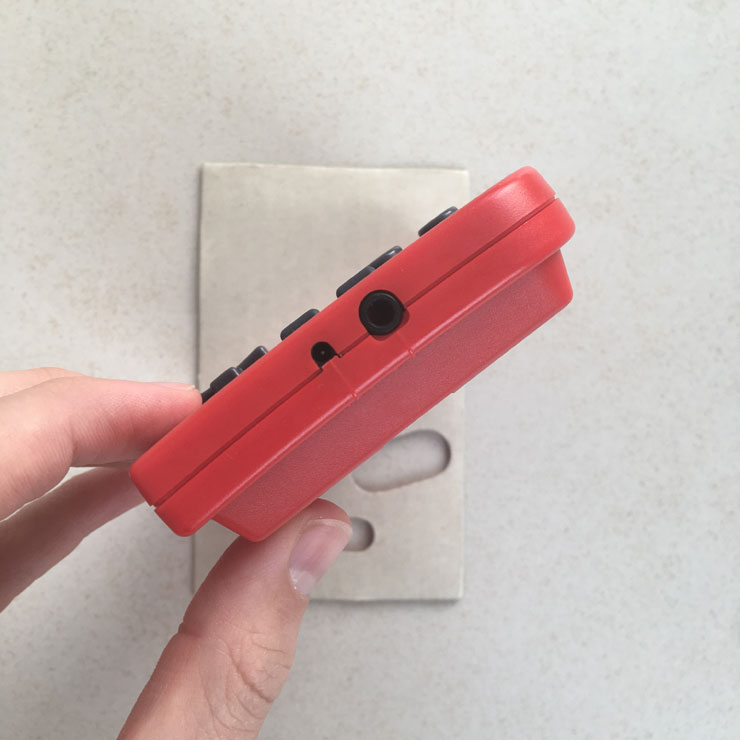
A 3.5mm headphone jack and a power input for the GameBoy portable battery back (MGB-002) are located at the bottom of the device.
Images by PlayEnthusiast.com, facts and trivia from the GameBoy Pocket manual (as provided with the device), Nintendo.co.uk, Bulbapedia.net, Nintendo Wikia and TheVerge.com


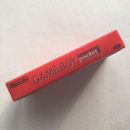
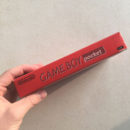
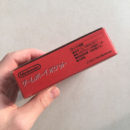
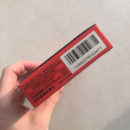
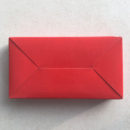






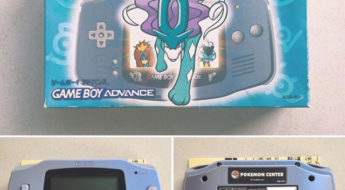
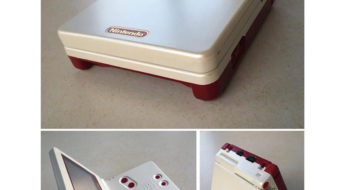
Leave a Comment